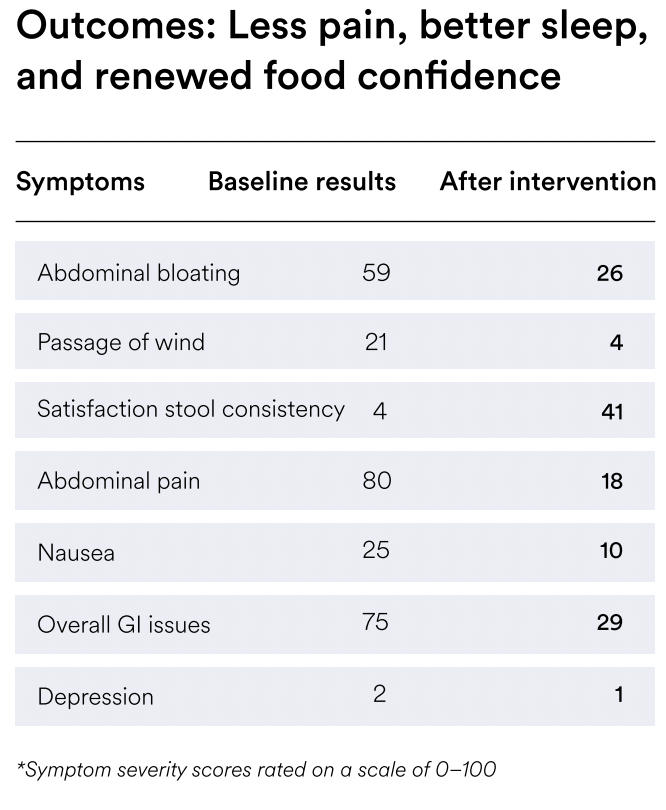New guidelines support gut-directed hypnotherapy in adolescent IBS
The management of IBS in adolescents is shifting toward integrated, brain-gut–focused care. The European and North American Societies for Pediatric Gastroenterology, Hepatology and Nutrition (ESPGHAN and NASPGHAN) recently issued joint guidelines recommending gut-directed hypnotherapy (GDH) as a first-line therapy for adolescents with functional abdominal pain disorders, including IBS.¹
This endorsement marks a significant advancement for pediatric practice. It reflects growing recognition that disorders of gut-brain interaction require interventions addressing both central and enteric mechanisms – not just dietary or pharmacologic management.
The guidelines also highlight the importance of accessible, lower-cost options that ensure young patients are not excluded from effective brain-gut therapy due to financial or geographic constraints.
Early data on digital delivery in adolescents
Emerging research from Monash University, led by Nerva’s Dr. Simone Peters, has demonstrated the feasibility and benefit of app-delivered GDH for adolescents with IBS.²
In a retrospective audit of 204 users aged 13–18 years, participants completed a six-week program featuring daily hypnotherapy, psychoeducation, and breathing exercises.
Abdominal pain scores decreased significantly – from an average of 66 mm to 46 mm on a 100 mm scale – and nearly half of all users achieved a clinically meaningful (>30%) reduction in pain.
Psychological outcomes also improved, with decreases in anxiety and depression symptoms, particularly among those who began the program with moderate to severe distress.
These findings suggest that digital GDH can provide meaningful symptom and quality-of-life improvements for adolescents and warrant further controlled study.
Case study: integrating GDH in adolescent care
In a new Nerva case study, a dietitian worked with an adolescent with IBS-M who had become increasingly anxious about eating and had begun to restrict her diet in response to symptoms.
Conscious that nutritional adequacy is critical for growth and development during adolescence, the dietitian adopted a nutrition-first, multimodal approach that incorporated gut-directed hypnotherapy (GDH).
GDH was introduced early to calm symptom-related vigilance and build confidence with food, allowing for gradual reintroduction and expansion of the diet without reinforcing avoidance patterns.

Over several weeks, the patient’s abdominal pain, bloating, and nausea reduced markedly, with a 78% improvement in abdominal pain. This was accompanied by better stool form, improved sleep, and a measurable increase in dietary variety.
This case highlights how integrating brain-gut therapy alongside dietetic care can prevent the escalation of food fear, support healthy growth, and promote sustained symptom improvement in adolescent IBS management.
Making evidence-based therapy accessible
Together, these developments point toward a more equitable and sustainable model of pediatric IBS care – one that integrates brain-gut therapy as a first-line option and leverages digital platforms to deliver it affordably and at scale.
Referring pediatric patients to brain-gut therapy
If you see adolescents in your practice, they can be referred to Nerva via the secure online form.
If you would like to discuss patient suitability first, reach out to our Clinical Specialists who are available to discuss options for young IBS patients.
References
- Wegh CAM, Ludvigsson JF, Vandenplas Y, et al. ESPGHAN/NASPGHAN guideline for the treatment of disorders of gut–brain interaction in children and adolescents. J Pediatr Gastroenterol Nutr. 2024;78(5):673–707. doi:10.1097/MPG.0000000000004262
- Peters SL, Gibson PR, Halmos EP. App-delivered gut-directed hypnotherapy program, Nerva, improves gastrointestinal symptoms and psychological outcomes in pediatric populations: a retrospective audit. Abstract presented at: Digestive Disease Week (DDW); May 2024; Washington, DC.

.jpeg)





